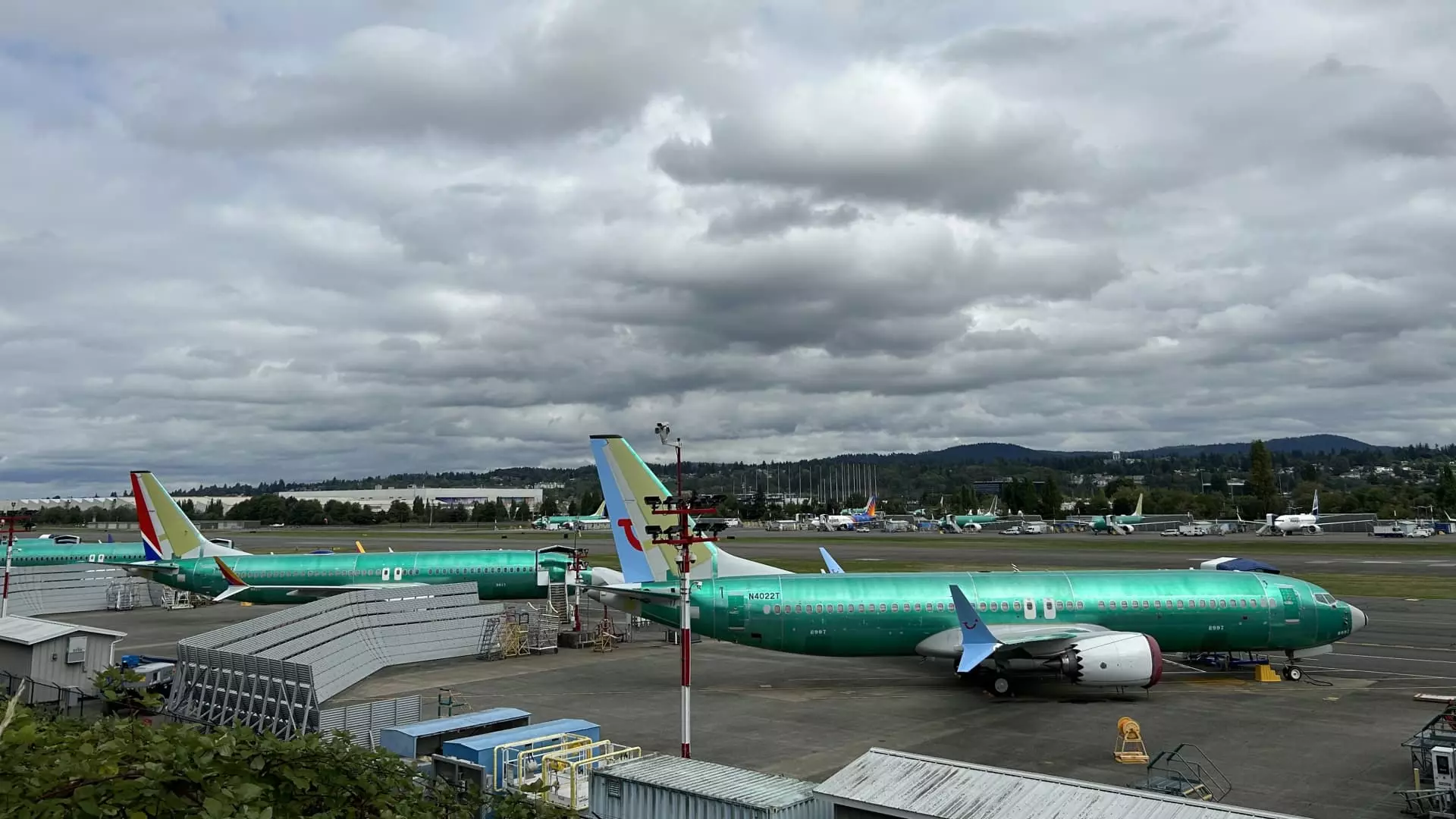In 2024, Boeing delivered just 348 aircraft, a significant decline of approximately one-third compared to the previous year. This sharp decrease can be attributed to a series of setbacks that plagued the aerospace manufacturer, including a troubling incident involving a midair door panel blowout and a machinist strike that lasted nearly eight weeks. These events not only impacted production during the critical fall months but also extended Boeing’s delivery lag behind its closest competitor, Airbus, which managed to deliver 766 aircraft in the same time frame—the highest number since 2019.
The dual pressures of the blowout incident and industrial action reveal Boeing’s vulnerabilities in maintaining its production timelines. The midair crisis raised safety concerns, prioritizing rigorous checks and reviews, thereby delaying the production schedule. Meanwhile, the strike among machinists halted the assembly line, further exacerbating the issues. The end of the strike in December allowed Boeing to restart the production of its marquee 737 Max jets, yet this late revival was insufficient to compensate for the delays incurred throughout the year.
Deliveries remain a crucial metric for aerospace manufacturers as they signify when substantial payments are received. The delay in delivery not only impacts Boeing’s revenue but also creates a ripple effect in the broader aviation market. With an ongoing shortage of available aircraft, leasing rates have surged, reaching unprecedented levels, which could hinder airlines’ operations and future expansion plans.
Order Activity Amidst Turbulence
Despite the challenges in aircraft deliveries, Boeing secured 142 new orders in December alone, showcasing its resilience in attracting new business amid adversity. Notably, 100 of those orders were for the highly popular 737 Max from Turkey’s Pegasus Airlines, while flydubai expressed interest in acquiring 30 787 Dreamliners, initially announced at the Dubai Air Show in late 2023. However, it’s important to recognize that Boeing had to adjust its records by removing more than 130 orders linked to India’s Jet Airways, which ceased operations.
For the entirety of 2024, Boeing’s gross orders totaled 569, translating to a net figure of 377 after accounting adjustments—numbers that still pale in comparison to Airbus’s performance, which reported 878 gross orders and 826 net orders. The competitive dynamics between the two aerospace giants were brought to the forefront during this period, emphasizing the need for Boeing to recalibrate its strategies to regain market dominance.
As the year drew to a close, anticipation grew regarding Boeing’s forthcoming discussions with investors. With the upcoming presentation scheduled for December 28, CEO Kelly Ortberg, along with other executives, will face tough questions concerning Boeing’s future production strategies and plans to restore profitability. Given the recent setbacks, it will be critical for Boeing to provide a clear roadmap outlining how it intends to not only recover from its current challenges but also to enhance its operational efficiency to narrow the delivery gap with Airbus.
While Boeing’s 2024 experience was marred by significant obstacles, the company’s ability to secure new orders indicates a steadfast demand for its aircraft. The pathway forward will require strategic adjustments to navigate supply chain constraints and strengthen production capabilities, ensuring that Boeing reestablishes itself as a leader in the aerospace sector.


Leave a Reply